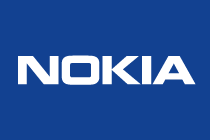Nokia has announced the world’s 25 Gbps symmetrical PON fibre broadband solution. This unique solution works on Nokia’s existing next-generation PON hardware, such as access nodes and line cards, to offer truly universal PON capabilities and enable communications service providers (CSPs) to supercharge their networks and enhance fibre network usage.
Nokia is the first vendor to commercialise an end-to-end solution for 25G PON. Designed for simplicity and cost-efficiency, the solution is based on Nokia’s Quillion chipset and existing next-generation PON access platform and line cards. The superior bandwidth and low-latency performance of the Nokia solution – enabled by the purpose built Quillion chipset family – means it can support 5G mobile transport as well as true 10G service for enterprises.
All Nokia customers with 10 Gbps Quillion boards will also have 25 Gbps capabilities in their network. Nokia 25G PON can co-exist with GPON and XGS-PON on the same infrastructure, allowing CSPs to add 25 Gbps in overlay without disrupting existing customer services. This will allow them to add 25G PON quickly and efficiently when and where needed to capitalise on new opportunities.
25G PON is a key technology that will enable fibre to become the single infrastructure that underpins the entire telecom industry and to deliver any service to any end point. It is also the best next step for PON: it leverages the high volumes and mature eco-system of data centre optical technologies to achieve the best cost point, huge capacity, fastest time-to-market, and simplest evolution path compared to 50G PON, which will require a massive technology leap or long time to mature.
Operators and industry vendors widely recognise the need to advance PON networks beyond 10Gbs speeds, to meet the demand for 5G mobile transport and premium enterprise services. This recently led to the creation of the 25GS-PON MSA Group, a coalition of CSPs, system vendors, and chipset and optical component manufacturers, to accelerate the standardisation and availability of 25G PON.
Sandra Motley, president of fixed networks at Nokia, said: “Nokia continues to lead the PON evolution. We have a long history of firsts: from the first volume GPON deployments to the first 10G PON and next-generation access platforms. It is vital that we keep pushing and enable our customers to capitalise on new opportunities while fully leveraging their existing investments. By delivering a step-change increase in fibre broadband networks with our 25G PON solution, CSPs will be able to bring better broadband to consumers and businesses, both through fixed fibre and 5G mobile broadband.”
Chi-Min Lo, managing director, Network Planning at Chunghwa Telecom, said: “25G PON is important technology to support 5G cross-haul and we aim to enhance our fibre broadband network beyond 10 Gbps to meet increasing demand and grasp new business opportunities in mobile transport and premium enterprise services. We’re excited to partner with Nokia and ready to test their 25G PON solution and look forward to getting it into the field.”
Julie Kunstler, senior principal analyst at Omdia, said: “CSPs are adding more capacity into their fibre access networks, supporting enterprise services and 5G wireless transport. 25G PON is the next-step, supporting capacity upgrades, while ensuring coexistence with earlier generations of PON. The 25G PON ecosystem takes advantage of existing optical technologies and proven know-how.”
Comment on this article below or via Twitter: @VanillaPlus OR @jcvplus






